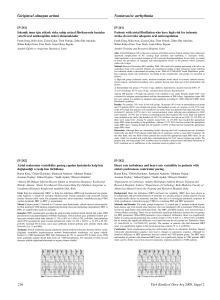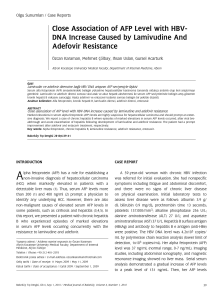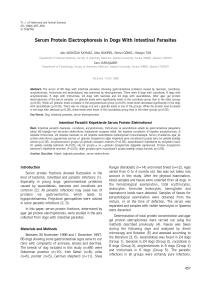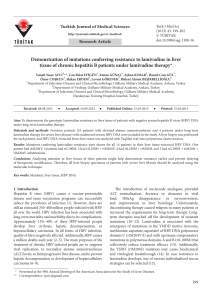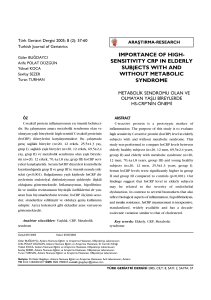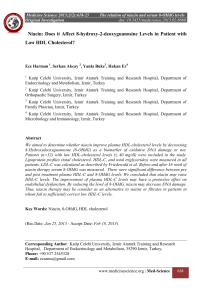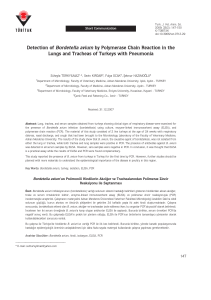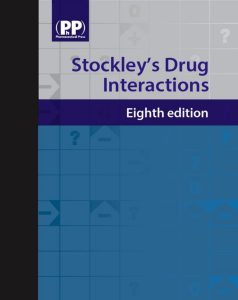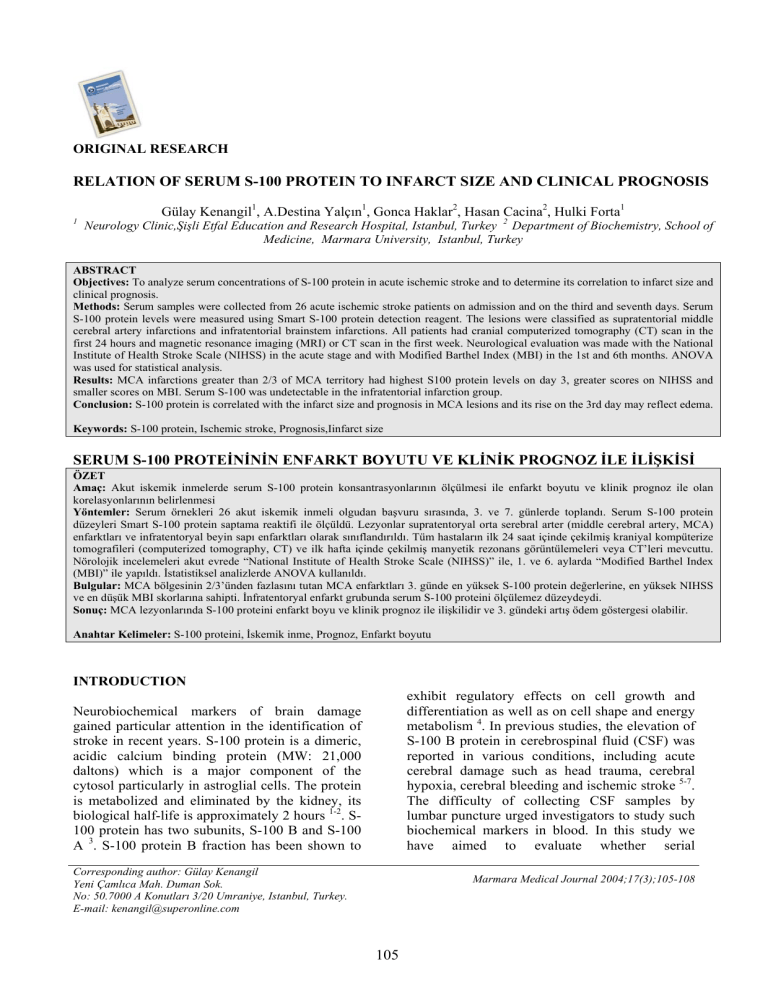
ORIGINAL RESEARCH
RELATION OF SERUM S-100 PROTEIN TO INFARCT SIZE AND CLINICAL PROGNOSIS
1
Gülay Kenangil1, A.Destina Yalçın1, Gonca Haklar2, Hasan Cacina2, Hulki Forta1
Neurology Clinic,Şişli Etfal Education and Research Hospital, Istanbul, Turkey 2 Department of Biochemistry, School of
Medicine, Marmara University, Istanbul, Turkey
ABSTRACT
Objectives: To analyze serum concentrations of S-100 protein in acute ischemic stroke and to determine its correlation to infarct size and
clinical prognosis.
Methods: Serum samples were collected from 26 acute ischemic stroke patients on admission and on the third and seventh days. Serum
S-100 protein levels were measured using Smart S-100 protein detection reagent. The lesions were classified as supratentorial middle
cerebral artery infarctions and infratentorial brainstem infarctions. All patients had cranial computerized tomography (CT) scan in the
first 24 hours and magnetic resonance imaging (MRI) or CT scan in the first week. Neurological evaluation was made with the National
Institute of Health Stroke Scale (NIHSS) in the acute stage and with Modified Barthel Index (MBI) in the 1st and 6th months. ANOVA
was used for statistical analysis.
Results: MCA infarctions greater than 2/3 of MCA territory had highest S100 protein levels on day 3, greater scores on NIHSS and
smaller scores on MBI. Serum S-100 was undetectable in the infratentorial infarction group.
Conclusion: S-100 protein is correlated with the infarct size and prognosis in MCA lesions and its rise on the 3rd day may reflect edema.
Keywords: S-100 protein, Ischemic stroke, Prognosis,Iinfarct size
SERUM S-100 PROTEİNİNİN ENFARKT BOYUTU VE KLİNİK PROGNOZ İLE İLİŞKİSİ
ÖZET
Amaç: Akut iskemik inmelerde serum S-100 protein konsantrasyonlarının ölçülmesi ile enfarkt boyutu ve klinik prognoz ile olan
korelasyonlarının belirlenmesi
Yöntemler: Serum örnekleri 26 akut iskemik inmeli olgudan başvuru sırasında, 3. ve 7. günlerde toplandı. Serum S-100 protein
düzeyleri Smart S-100 protein saptama reaktifi ile ölçüldü. Lezyonlar supratentoryal orta serebral arter (middle cerebral artery, MCA)
enfarktları ve infratentoryal beyin sapı enfarktları olarak sınıflandırıldı. Tüm hastaların ilk 24 saat içinde çekilmiş kraniyal kompüterize
tomografileri (computerized tomography, CT) ve ilk hafta içinde çekilmiş manyetik rezonans görüntülemeleri veya CT’leri mevcuttu.
Nörolojik incelemeleri akut evrede “National Institute of Health Stroke Scale (NIHSS)” ile, 1. ve 6. aylarda “Modified Barthel Index
(MBI)” ile yapıldı. İstatistiksel analizlerde ANOVA kullanıldı.
Bulgular: MCA bölgesinin 2/3’ünden fazlasını tutan MCA enfarktları 3. günde en yüksek S-100 protein değerlerine, en yüksek NIHSS
ve en düşük MBI skorlarına sahipti. İnfratentoryal enfarkt grubunda serum S-100 proteini ölçülemez düzeydeydi.
Sonuç: MCA lezyonlarında S-100 proteini enfarkt boyu ve klinik prognoz ile ilişkilidir ve 3. gündeki artış ödem göstergesi olabilir.
Anahtar Kelimeler: S-100 proteini, İskemik inme, Prognoz, Enfarkt boyutu
INTRODUCTION
exhibit regulatory effects on cell growth and
differentiation as well as on cell shape and energy
metabolism 4. In previous studies, the elevation of
S-100 B protein in cerebrospinal fluid (CSF) was
reported in various conditions, including acute
cerebral damage such as head trauma, cerebral
hypoxia, cerebral bleeding and ischemic stroke 5-7.
The difficulty of collecting CSF samples by
lumbar puncture urged investigators to study such
biochemical markers in blood. In this study we
have aimed to evaluate whether serial
Neurobiochemical markers of brain damage
gained particular attention in the identification of
stroke in recent years. S-100 protein is a dimeric,
acidic calcium binding protein (MW: 21,000
daltons) which is a major component of the
cytosol particularly in astroglial cells. The protein
is metabolized and eliminated by the kidney, its
biological half-life is approximately 2 hours 1-2. S100 protein has two subunits, S-100 B and S-100
A 3. S-100 protein B fraction has been shown to
Corresponding author: Gülay Kenangil
Yeni Çamlıca Mah. Duman Sok.
No: 50.7000 A Konutları 3/20 Umraniye, Istanbul, Turkey.
E-mail: [email protected]
Marmara Medical Journal 2004;17(3);105-108
105
Marmara Medical Journal 2004;17(3);105-108
Gülay Kenangil, et al.
Relation Of Serum S-100 Protein To Infarct Size and Clinical Prognosis
considered significant when probability was p <
0.05. One of our patients with large MCA
infarction died on the 10th day of admission
because of heart failure. (We were able to take his
blood samples.) His NIH score was 19 and his
MBI score was accepted as zero for both the first
and the 6th month.
measurements of blood S-100 B protein level
correlate with the infarct size and the clinical
prognosis in acute ischemic stroke.
METHODS
The study was approved by the Ethical Committee
of Marmara University Medical Faculty. S-100 B
serum levels were determined in 26 patients with
acute ischemic stroke (15 men, 11 women; mean
age 65.1 ± 13.35) admitted to our hospital within
the first 24 hours of stroke onset. Patients were
classified according to the size and localization of
the infarcts as, supratentorial large middle
cerebral artery (MCA) infarctions greater than 2/3
of MCA territory (n=6), medium MCA infarctions
between 1/3 to 2/3 of MCA territory (n=7), small
MCA infarctions smaller than 1/3 of MCA
territory (n=6), and infratentorial brainstem
infarctions (n=7). The localization of infarcts was
made by vascular mapping of Tatu and his friends
8
. All patients had neurological examination and
cranial CT scan in the first 24 hours and cranial
CT or MRI in the first week. Blood samples were
collected on admission and on the third and
seventh days. S-100 B protein levels were
measured by an ELISA method (Smart S-100
protein, Skye Pharma Tech. Inc, Canada).
Neurological evaluation was made by National
Institute of Health Stroke Scale (NIHSS) in the
acute stage and by Modified Barthel Index (MBI)
on the first and sixth months. NIHSS scores were
as follows: 1-7 mild neurological deficit, 8-14
moderate neurological deficit, ≥ 15 severe
neurological deficit. In MBI the maximum score
was 20, meaningfull independency. Score 0 was
the worst, meaning full dependency. Statistical
analyses were made using the Instat 2.0
programme. Data were given as mean ± SEM.
Repeated measures of ANOVA with TukeyKramer Multiple comparison test was used for the
statistical analysis and the differences were
RESULTS
Patients were divided into 4 groups according to
localization and size of the lesion seen on the CT
or MRI. Groups were as follows: Large MCA
infarctions (greater than 2/3 of MCA territory,
Table I), medium MCA infarctions (1/3-2/3 of
MCA territory), small MCA infarctions (smaller
than 1/3 of MCA territory), and infratentorial
brainstem infarctions (Table II). Five of the
brainstem lesions were in pons, located in
paramedian region and greater than 1.5 cm. The
other two lesions were very large and one of them
was located along both lateral medulla and
cerebellum. The other had scattered lesions in
pons, midbrain and thalamus. Serum S-100
protein levels are given in Table III. Serum S-100
B protein was undetectable in the brainstem
infarctions. In large MCA infarctions serum S-100
B protein concentration was significantly higher
in 3rd day samples when compared to samples
taken on admission (p<0.05). However, there was
no difference between levels on admission and at
7th day or 3rd and 7th day samples. There was no
statistical significance between S-100 B levels on
admission, at 3rd day and/or 7th day for patients
with medium and small MCA infarctions. There
were significant correlations between S-100
protein concentrations and MBI scores in large
MCA infarctions (p<0.05 for both first and sixth
month evaluations) but the correlation between S100 protein concentrations and NIHSS was not
significant.
Table I: Data on large MCA infarctions
Patients
Age
Gender
National Institute of
Health Stroke Scale
Modified Barthel
Index
(First month)
Modified Barthel
Index (Sixth
month)
1
2
58
68
M
M
19
19
0
0
0
0
3
4
5
81
98
62
W
M
M
14
16
18
0
0
8
0
0
12
6
63
W
17
9
12
106
Marmara Medical Journal 2004;17(3);105-108
Gülay Kenangil, et al.
Relation Of Serum S-100 Protein To Infarct Size and Clinical Prognosis
Table II: Data on Brainstem infarctions
Patient No.
Age
Gender
20
21
22
23
24
25
26
78
51
63
57
47
61
35
M
W
M
M
M
W
W
National
Institute of
Health Stroke
Scale
8
5
13
0
3
6
3
Modified Barthel
Index
(First
month)
Modified Barthel
Index (Sixth
month )
15
20
16
20
20
20
20
20
20
20
20
20
20
20
Table III: Serum S-100 levels (ng/L) in MCA infarctions
Day 0
Large MCA infarctions
(n=6)
Medium MCA infarctions
(n=7)
Small MCA infarctions
(n=6)
Day 3
18 ± 7
114 ± 29 *,**
Day 7
40 ± 19
12 ± 5
13 ± 7
5±2
1 ± 0.4
1.5 ± 0.8
3.3 ± 2.4
outcome 15. Büttner et al. 12 studied serum S-100
protein levels after MCA infarctions in relation to
clinical data and prognosis. Patients with
extensive ischemic edema (rather than patients
with small lesions) were characterized by high S100 levels in serum. In our study we evaluated the
infarctions in MCA territory and divided them
into 3 groups according to their size. Patients with
large MCA infarctions had the highest serum S100 levels on day 3 and their short and long-term
prognosis were the worst of all. According to our
knowledge large MCA infarctions had maximum
edema on day 2 and 3, therefore we agree with
Büttner that S-100 levels can reflect cerebral
edema. Smaller artery groups had no significant
rise in serum S-100 on day 0, 3 or 7. In large
MCA infarctions there was no significant
correlation between third day S-100 values and
NIHSS but there was a statistically significant
correlation between third day S-100 values and
the first and sixth month MBI. The prognosis was
the worst in large MCA infarctions and they had
the smallest scores in MBI. Therefore, we
conclude that in large ischemic infarctions MBI is
a good index for showing the clinical prognosis.
In more recent reports Wunderlich et al. 16
reported that patients with cerebellar or brainstem
lesions showed better functional outcome at
discharge from the hospital. In our infratentorial
infarction group, lesions with different size were
located in different infratentorial areas.
DISCUSSION
Many markers of ischemic brain damage such as
S-100 B, neuron specific enolase (NSE), glial
fibrillary acidic protein (GFAP), myelin basic
protein (MBP) have been investigated after acute
ischemic stroke 9-10. Persson et al. 11 were the first
to study S-100 protein in blood and found
elevations in two patients. Elevation of serum S100 protein B levels in acute stroke observed in
our study were in accordance with a number of
reports in the literature 12-14. Kim et al. 13 found S100 protein B in 11 patients who had either large
ischemic or hemorrhagic stroke. They found S100 peak on the third day in patients with large
ischemic stroke and on the first day in patients
with hemorrhagic stroke. Herrmann et al. 14
compared S-100 B and GFAP serum
concentrations after stroke and found that release
of both markers was associated with the volume
of brain lesions and the neurological status at
discharge from the hospital. Missler et al. 15
studied 44 patients and found good correlation
between peak S-100 protein level in plasma and
clinical outcome after 6 months. This was the first
study to report an association between a single
biochemical marker from blood in the acute phase
of stroke and functional outcome of infarction.
They concluded that the concentration of S-100
protein in blood during acute stroke was a useful
marker of infarct size and of long-term clinical
107
Marmara Medical Journal 2004;17(3);105-108
Gülay Kenangil, et al.
Relation Of Serum S-100 Protein To Infarct Size and Clinical Prognosis
7.
Interestingly no elevation of serum S-100 protein
was found in any of them. They all had good short
and long term prognosis. We believe that this
observation requires further investigation. The
small sample size of this study may be the
shortcoming of it. . Recent reports about S-100 B
measurements in malignant MCA infarctions also
supported that S-100 B values elevations in acute
stroke reach maximum levels in 2 to 4 days after
stroke 17,18. Foerch et al reported that a single S100 B measurement performed 12 to 24 hours
after symptom onset could predict the
development of the malignant MCA infarctions
and it could be used as a valuable marker in
guiding clinical and therapeutic desicions for this
life- threatening stroke 17.
Finally we conclude that serum S-100 B
measurement can be used as an early marker of
brain damage. It is correlated with the size of the
lesion in MCA infarctions and may reflect
cerebral edema. Serum S-100 protein B levels
may also be used as a prognostic marker. Large
sample sized studies are needed.
8.
9.
10.
11.
12.
13.
14.
REFERENCES
1.
2.
3.
4.
5.
6.
Martens P, Raabe A, Johnsson P. Serum S-100 and
neuron-specific enolase for prediction of regaining
consciousness after global cerebral ischemia. Stroke
1982; 9: 2363-2366.
Heizmann WC. Ca-binding S-100 proteins in the central
nervous system. Neurochem Res 1999; 24: 1097-1100.
Heizmann WC, Cox JA. New perspectives on S-100
proteins: a multifunctional Ca+2-Zn+2 and Cu+2 binding
protein family. Biometals 1998; 11: 383-397.
Schmidt S. S-100 B: pathogenetic and pathophysiologic
significance in neurology. Nervenarzt 1998; 69: 639646.
Hardemark HG, Erricson N, Kotwica Z, et al. S-100
protein and neuron-specific enolase in CSF after
experimental traumatic or focal ischemic brain damage.
J Neurosurg 1989; 71: 727-731.
Makuno K, Kato K, Kawai K, Matsuoka Y, Yanagi T,
Sobue I. Neuron-specific enolase and S-100 protein
levels in cerebrospinal fluid of patients with various
neurological diseases. J. Neurol Sci 1983; 60: 443-451.
15.
16.
17.
18.
108
Lamers KJ, van Engelen BG, Gabreels FJ, Hommes OR,
Borm GF, Wevers RA. Cerebrospinal neuron-spesific
enolase, S-100 and myelin basic protein in neurological
disorders. Acta Neurol Scand 1995; 92: 247-251.
Tatu L, Moulin T, Bogousslavsky J, Duvernoy H.
Arterial territories of the human brain, cerebral
hemispheres. Neurology 1998; 50: 1699-1708.
Butterworth RJ, Wassif WS, Sherwood RA,Gerges A.
Serum NSE, carnosinase, and their ratio in acute stroke:
an enzimatic test for predicting outcome ? Stroke 1996;
27: 2064- 2068.
Engelen BG, Lamers KJ, Gabreels FJ, Wever RA, van
Geel WJ , Borm GF. Age-related changes of neuron
specific enolase, S-100 protein and myelin basic protein
concentration in cerebrospinal fluid. Clin Chem, 1992;
38: 813-816.
Persson L, Hardemark HG, Gustafsson J et al. S-100
protein and neuron specific enolase in cerebrospinal
fluıd and serum: markers of cell damage in human
central nervous system. Stroke 1987; 18: 911-918.
Büttner T, Weyers S, Postert T. S-100 Protein: serum
marker of focal brain damage after ischemic territorial
MCA infarction. Stroke 1997; 28: 1961-1965.
Kim JS, Yoon SS, Kim YH,Ryu JS. Serial measurement
of interleukin-6, transforming growth factor-B and S100 protein in patients with acute stroke. Stroke 1996:
27; 1553-1557.
Herrmann M, Vos P, Wunderlich MT, Bruijn CHMM,
Lamers KJB. Release of glial tissue-specific proteins
after acute stroke. A comparative analysis of serum
concentrations of protein S-100 B and glial fibrillary
acidic protein. Stroke 2000; 31: 2670-2677.
Missler U, Wiesmann M, Friedrich C, Kaps M. S-100
Protein and neuron-specific enolase concentrations in
blood as indicators of infarction volume and prognosis
in acute ischemic stroke. Stroke 1997; 28: 1956-1960.
Wunderlich MT, Ebert AD, Kratz T, Goertler M, Jost S,
Hermann M. Early neurobehavioral outcome after stroke
is related to release of neurobiochemical markers of
brain damage. Stroke 1999; 30: 1190-1195.
Foerch C, Otto B, Singer O C, Haefelin T N, Yan B,
Berkefeld J, Steinmetz H et al. Serum S-100 B predicts a
malignant course of infarction in patients with acute
middle cerebral artery occlusion. Stroke 2004; 35: 21602164.
Foerch C, Singer O C, Haefilin TN, Rochemont M,
Steinmetz H. Evaluation of Serum S-100 B as a
surragate marker for long-term outcome and infarct
volume in acute middle cerebral artery infarction. Arch
Neurol 2005 ;62: 1130-1134.

